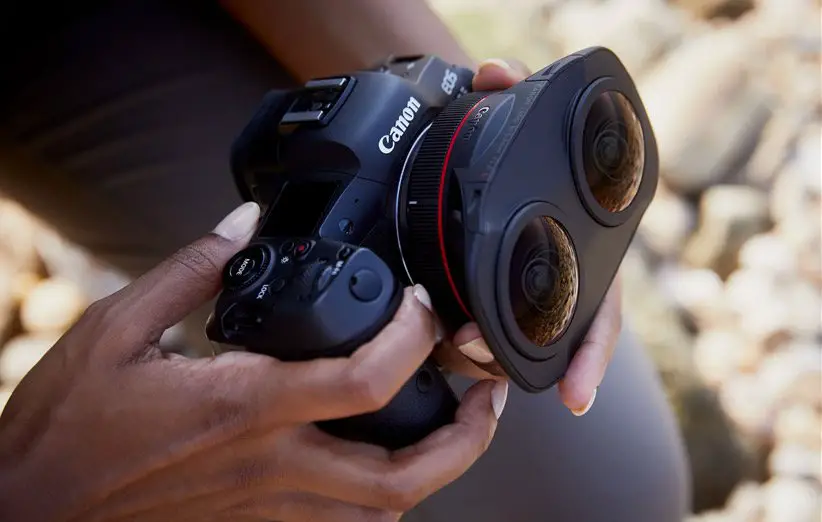Canon has announced the Canon RF 5.2mm f/2.8L Dual Fisheye, it is the company’s first 3D virtual reality lens. It is a stereoscopic 180° VR lens for a wide range of applications, including VR content creators.
Canon RF 5.2mm f/2.8L Dual Fisheye specs
It is a 3D 180° virtual reality lens, with a stereoscopic design that stands out for its dual fisheye lens and an ultra-wide angle of view, which is the basis of its ability to capture stereoscopic VR images. Canon’s advanced optical design enables the camera to project two images onto its single sensor, ensuring perfect alignment and synchronization.
Another interesting feature is the inclusion of a gelatin filter holder at the rear, which makes it possible to use ND filters from any manufacturer to maintain normal shutter speeds and apertures when shooting in bright conditions. In addition, the lens features an intelligent folding optical design and 60 mm baseline length for a natural-looking view, and boasts a compact design that measures 121.1×83.6×53.52 mm and weighs 350 grams.

The new lens is designed to take advantage of the excellent capabilities of the RF mount and would be the first item in the new EOS VR System, which comes in response to the demand for high-quality 180° VR (3D) content. With the adoption of VR technology on the rise in many industries, including training, sports, live events and documentaries, the brand’s new offering simplifies the entire process of recording 180° VR stereoscopic images, as well as their post-production. The EOS VR System’s ability to create an immersive experience puts viewers in the center of the action, delivering professional image quality and greater levels of realism.
Canon RF 5.2mm f/2.8L Dual Fisheye price and release date
The new Canon RF 5.2mm F2.8 L Dual Fisheye lens is designed exclusively for the Canon EOS R5. Thanks to the camera’s 8K full-frame sensor, in conjunction with the new optics, they promise high-resolution 180° VR recordings with a high dynamic range, using Canon Log / Log 3. Its fast f/2.8 aperture, together with the EOS R5’s ability to use high ISO sensitivities, allow excellent low-light results to be achieved, giving content creators the opportunity to shoot in a wider range.





